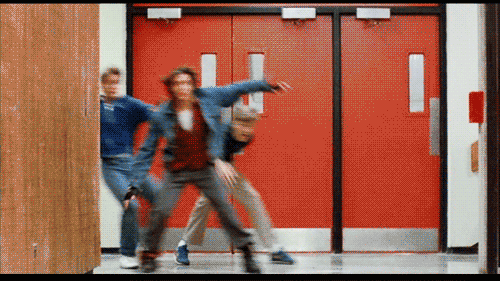
It’s early August, which shouldn’t mean back-to-school season is in full swing just yet. But for many marketers, it already — tragically — is.
This year, the National Retail Federation estimated that retailers can expect a more lucrative shopping season due to longer lists of necessary supplies and a higher demand for big-ticket electronic items. The NRF’s annual survey expected total spending on back-to-school items to hit $74.9 billion, up 3 percent from last year.
About one-third of those shoppers are expected to buy at least a few of their supplies online. Online back-to-school shoppers are expected to spend about $330 on supplies. So it’s no surprise that many of the biggest retailers have concentrated their ad efforts on the digital front. The cornerstone of Old Navy’s back-to-school campaign is “Unlimited,” a four-minute video and original track that is available on iTunes. Kmart’s campaign is also a “hip-hop” music video called “Lunch Ladies,” available on YouTube.
Target’s back-to-school campaign, which started late last month (in July!), is focused more on college kids. It enlisted YouTube stars including Todrick Hall and Ann Lee to make-over dorms and small college apartments in a four-part series on YouTube. According to AceMetrix, BTS ad volume is up 50 percent compared to the same period last year. A total of 35 BTS ads have aired this season.
Ace Metrix said that while ads from retail brands make up most of the volume for back-to-school marketing, household brands like Kleenex and Ziploc are bringing in higher Ace scores. (Ace scores combine “persuasion” and “watchability” and are scored out of 950.)
The first brand to get into the back-to-school ad game was Ziploc, which launched “Start the School Year Off Right” campaign on — wait for it — June 21, two weeks before the beginning of last year’s back-to-school “season.” But getting out of the gate first doesn’t necessarily mean you win. One NRF study shows most people tend to shop for back-to-school supplies, both online and offline, three weeks to one month before school starts.
However, it’s coupons and promotions that get customers in store: More people are shopping for sales more often, according to the NRF’s July consumer survey. The NRF also found in its August update that coupons, promotions and inserts “influence” back-to-school shopping at specific stores. Internet and email advertising are the 8th and 9th most powerful media in influencing where customers decide to shop.
| Media That Influences Shopping Particular Stores For BTS |

|
| Information Among households with a school age child |
 Charts from the NRF Foundation’s Retail Insight Center. To access this data and more research please visit the Retail Insight Center. Charts from the NRF Foundation’s Retail Insight Center. To access this data and more research please visit the Retail Insight Center. |
Planned back-to-school spending according to NRF is focused mostly on clothing and accessories, or electronic equipment. While Target and Kohl’s are leading the pack with the most back-to-schoolb ads — five each — since June, Best Buy isn’t far behind, with a large-scale online campaign focused on getting college kids the tech they need.
| Planned BTS Spending – By Category In Billions |

|
 Charts from the NRF Foundation’s Retail Insight Center. To access this data and more research please visit the Retail Insight Center. Charts from the NRF Foundation’s Retail Insight Center. To access this data and more research please visit the Retail Insight Center. |
More in Marketing

Pitch deck: How Amazon is recasting Twitch as a core part of its CTV pitch
Amazon is positioning Twitch as a defining asset in its CTV ambitions.

Netflix transforms former mall department stores into experiential venues
The location in Dallas opens this week, and one at the King of Prussia mall near Philadelphia opened last month.

Future of Marketing Briefing: AI has created a new talent paradox in programmatic agencies
The job isn’t execution anymore. AI handles that. The job is judgement.





